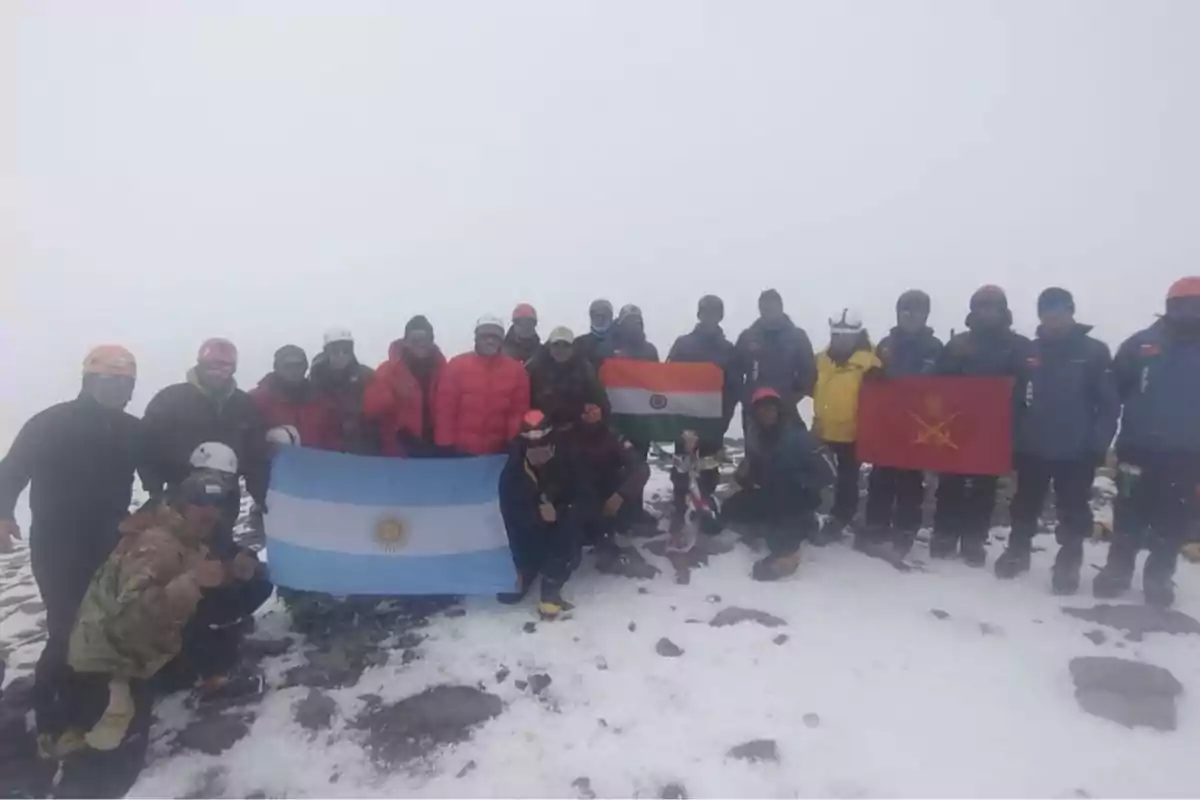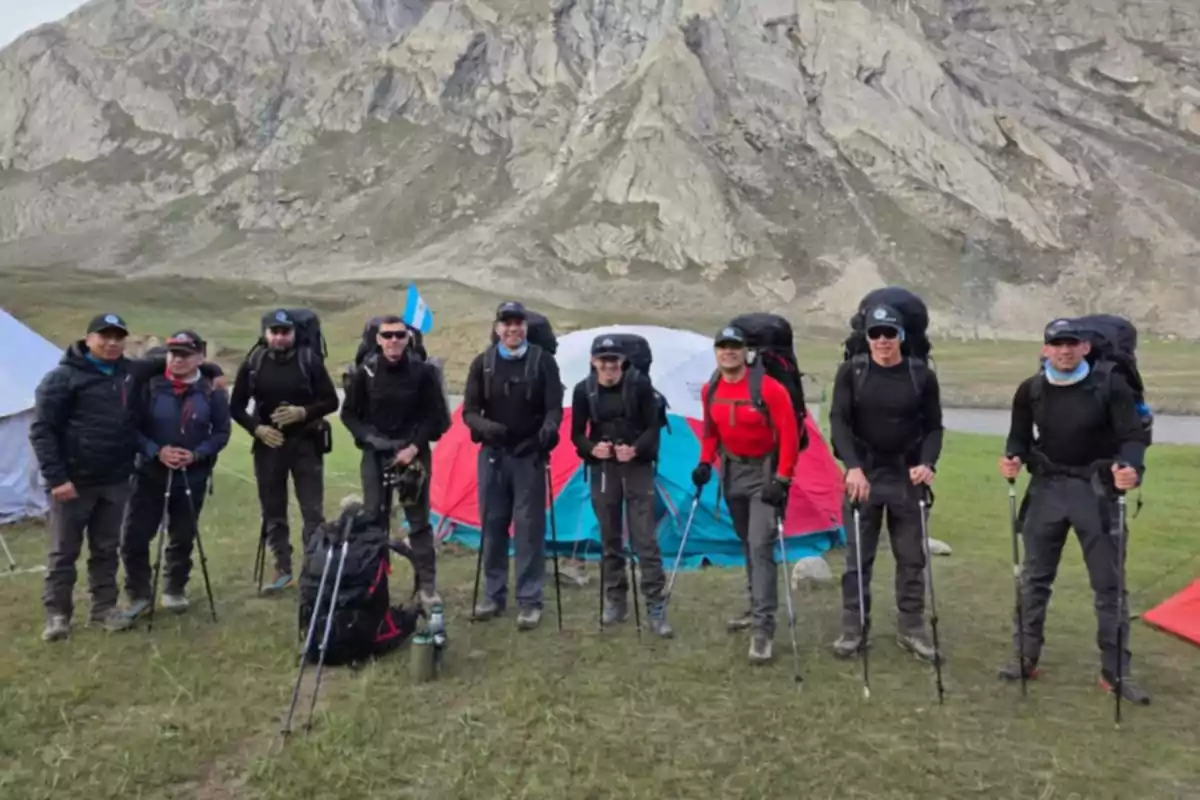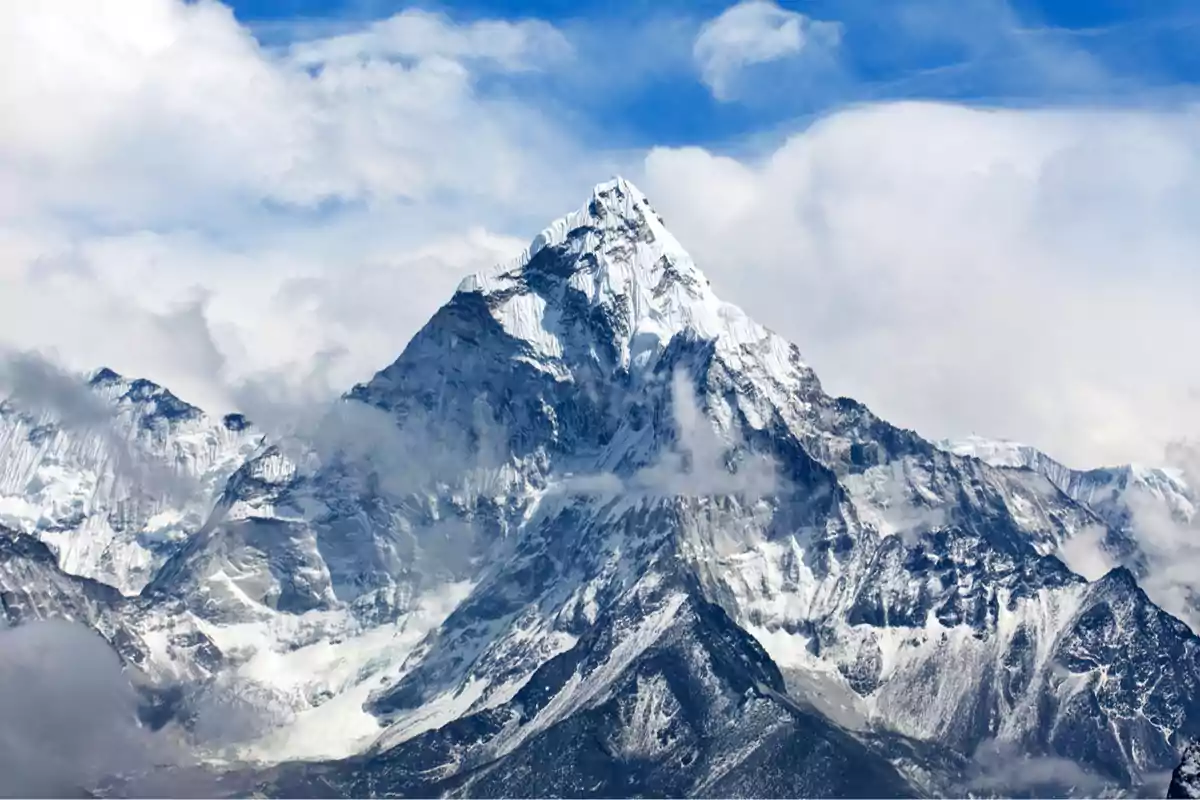
Members of the Argentine Army reached the summit of Mount Kun in the Himalayas.
This is the first time that a mountain unit from Argentina has reached the summit of the Himalayas mountain range
This Tuesday, August 5, coinciding with Mountain Troops Day, a patrol from the Argentine Army reached the summit of Mount Kun, located at 7,077 meters (23,182 feet) above sea level.
This is the first time that a mountain unit from Argentina has managed to conquer this peak in the Himalayas, marking a historic milestone for the country's armed forces. The feat, accomplished at 00:15 hours, was carried out together with a team from the Indian Army.
The achievement of this binational expedition was made possible thanks to a project that was developed over more than a year, whose immediate precedent was a journey to Aconcagua at the beginning of 2024, carried out together with members of the French Army.
After that experience, both armies began a rigorous selection process to form the final team that would travel to India in mid-July with the goal of facing the challenge in the Himalayas.

The Argentine patrol was composed of Major Ramiro Antoñana, originally from Lobos, Buenos Aires, belonging to the Command of the VIII Mountain Brigade based in Mendoza; Captain Rodrigo Orellano, from San Carlos, Mendoza, member of the Mountain Engineers Battalion 6 of Neuquén; and Senior Non-Commissioned Officer Pedro Rodríguez, born in Tartagal, Salta, belonging to the Mountain Hunters Company 8, located in Puente del Inca.
The patrol was completed with the participation of Principal Non-Commissioned Officer Néstor Maidana, originally from San Salvador de Jujuy (Jujuy), belonging to the Mountain Hunters Company 8 based in Puente del Inca; and Principal Non-Commissioned Officer Juan Bustos, born in Puente del Inca (Mendoza), also a member of that unit.
The team also included Assistant Sergeant Víctor Giordano, from Luque (Córdoba), member of the Mountain Infantry Regiment 16, in Uspallata.
The team was completed by Assistant Sergeant Carlos Villafañe, originally from Esquel (Chubut), assigned to the Mountain Military School of Bariloche; First Sergeant Oscar Oro, native of Cinaguita (San Juan), belonging to the Mountain Infantry Regiment 11, based in Tupungato; and First Sergeant Diego Alegre, from Capitán Bermúdez (Santa Fe), who serves at the Mounted Troops Military School, located in Buenos Aires.

How the operation unfolded
The operation formally began on July 23, when the joint patrol between Argentina and India departed from Kumathang / Kargil bound for the Safat valley. At that point, at an approximate altitude of 3,900 meters (12,795 feet), a camp was set up by the side of the road and operational coordination began with the Headquarters of the 8th Mountain Division of the Indian Army.
The acclimatization period included walks through ravines and steep areas, along with the thorough preparation and review of equipment, medications, and medical supplies. The patrol leader, an officer from the Indian Army, gave a technical talk on safety and climbing management aspects.
A communications system was also established and a possible aerial evacuation plan was coordinated together with the Indian Air Force. Medical evaluations of the personnel were carried out every day, without exception.
On July 25, the base camp was set up at 4,515 meters (14,813 feet) in altitude. Once the main load was transported, two non-commissioned officers and two porters remained at the site, while the leader and deputy leader of the expedition conducted an aerial reconnaissance of the terrain.
The expedition was made up of a total of 67 people: 17 members of the Indian Army, 9 from the Argentine Army, 11 members of the specialized avalanche rescue team, and the rest belonging to logistics support personnel and porters.
At the Safat shelter, two days later, a training session on medical emergencies and altitude sickness prevention was conducted by medical personnel from the Indian Army. Meanwhile, the Argentine military personnel provided instruction on the operation of the Recco radar, used in search and rescue operations. At the same time, the load to be transported the following day was organized.
On July 28, the entire contingent moved to the base camp and proceeded to reconnoiter the route leading to Camp 1. The final assault on the summit was scheduled for the planned dates: August 4 and 5.
As part of the operation, tasks were carried out for the distribution, review, and packing of equipment for the high-altitude camps, daily medical checks of the personnel, and ongoing coordination with the Indian military command.
More posts: